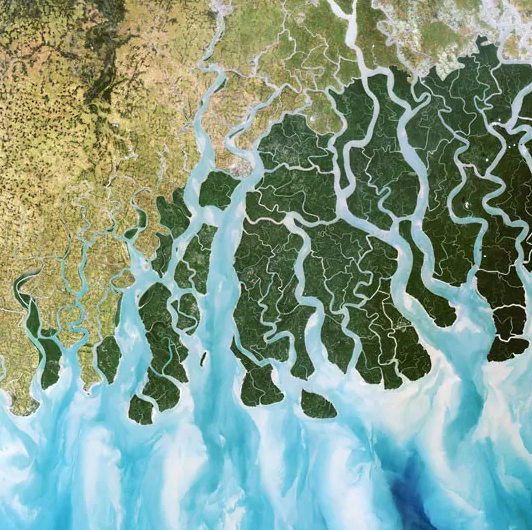
Life survives and thrives on water. History reveals that human settlements have always been concentrated around water abundant areas. Even today, most people live in plains surrounding rivers and in coastal areas. However, the rapid population increase over the last few decades has immensely affected availability of fresh water sources.
Oceans hold 97 percent of Earth’s water, but that water is not usable. Only 3 percent is available for human use, and one third of that is in the form of ground water. Just 0.3 percent is accessible surface water. According to the United Nations Development Programme (UNDP), “over 1.7 billion people live in river basins where water use exceeds recharge,” bringing down groundwater levels and causing rivers to dry up due to excessive use.
Today’s immediate and immensely pressing issue is the availability of clean water. At present, about 750 million people are deprived of access to safe drinking water and 2.5 billion people do not have basic sanitation facilities. The United Nations met its Millennium Development Goal (MDG) regarding drinking water in 2010, yet there is still a desperate need for improvement. According to the World Health Organization (WHO), 2.4 billion people will be without proper sanitation facilities in 2015.
A March 2015 UN World Water Development Report, titled Water for a Sustainable World, cautioned that at the current rate of use, only 60 percent of global water demand will be met by 2030. South Asia’s case is especially severe, as the region’s population of almost 1.7 billion people is causing stress on water resources. It is estimated that 22 of 32 major cities in India face a water shortage daily. Similarly, Pakistan’s two major industrial cities, Karachi and Faisalabad, are water deficient. UNDP reports that less than 77% of Pakistan’s population has access to safe drinking water. Dhaka, the capital of Bangladesh, also faces stressed water supplies due to gap in demand and supply. Demand for water has reached 2.2 billion liters a day while supply remains at 1.9 billion liters a day. South Asia’s precious river sources Indus, Ganges, and Brahmaputra are facing pressure due to population growth, urbanization and industrialization.
South Asia’s water supply is dependent on China, because all the main rivers—Indus, Ganga and Brahmaputra—are connected to the Tibetan Autonomous Region. This supply is now under threat from Chinese and Indian hydropower projects. China’s South-to-North Water Diversion Project, to supply water to arid northern Chinese territory, may affect river flows in South Asia. India is also pursuing inter-basin water diversion projects, which have caused concerns in Bangladesh.
An India gets just 1,730 cubic meters of fresh water on average, as compared to 8,209 cubic meters globally, while Pakistanis get only 1,000 cubic meters. Himalayan glaciers, one of the main sources of South Asian waters, are melting fast. Another supply of South Asian water reserves—monsoons—is also in danger, due to climate factors. Extreme weather patterns have developed in India and Pakistan in the last decade. A Stanford University study, which considered rainfall patterns from 1950 to 2010, noted that the total average rainfall had reduced, with more regular dry spells.
Rivers are shared natural resources which cannot be partitioned, and must be managed for joint usage. There are several water-sharing treaties in South Asia between India and Pakistan (Indus Waters Treaty), India and Bangladesh, and India and Nepal, prominently. However, disputes still prevail. Water governance is the “political, economic, social and administrative systems in place” to control and manage water resources effectively. Global water crisis is mainly a governance crisis. Global water needs will increase 55 percent by 2050, and thus, current resources need to be managed.
According to the WHO, even though about 97 percent of the people in Bangladesh have access to drinking water, 40 percent lack basic sanitation. Additionally, 90 percent of the population relies on ground water, which is largely contaminated. Nepal is a small country with abundant water resources but lacks the capability to manage them. Kathmandu is chronically water-deficient, even with seven streams of the Bagmati River flowing in the Kathmandu Valley. Dilapidated infrastructure, such as the city’s 100-year-old leaking pipeline network, is making things worse. Bhutan also has abundant water resources, with per capita water availability of 75,000 cubic meters, but it still faces supply issues in urban areas.
Since water resources do not exist in isolation, and cannot be divided but only be shared, water management and governance are interlinked. Pakistan, India, Afghanistan, and Bangladesh have a shortage of water, while Bhutan and Nepal have it in abundance. Thus, an integrated effort to establish a water-governance and sharing mechanism can be an effective tool to tackle this menace and reinforce regional interconnectedness.
***
Image: Planet Observer, Getty


